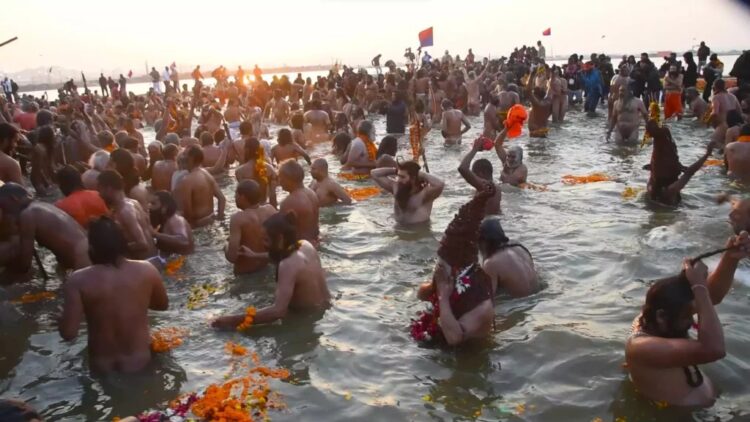Maha Kumbh 2025, one of the largest religious gatherings in human history, concludes today in Prayagraj with the final snan on Mahashivratri. The event, which began on January 13 and spanned 45 days, witnessed an unprecedented 65 crore pilgrims taking a dip in the sacred Ganga River, making it the most attended Maha Kumbh ever. Pilgrims from across India and around the world have gathered on the banks of the sacred Ganga to seek blessings and purification.
According to the Uttar Pradesh government, by Wednesday noon, a total of 64.77 crore devotees had arrived in Prayagraj for the religious gathering. The Maha Kumbh 2025 also attracted major brands seeking to capitalize on the massive footfall. For the Yogi Adityanath-led government, this grand event served as a crucial milestone in its mission to transform Uttar Pradesh into a $1 trillion economy.
“The potential of Uttar Pradesh which the world is witnessing today can be linked to the Maha Kumbh Mela. The Maha Kumbh alone is going to help the economy of UP grow by over Rs 3 lakh crore,” Yogi Adityanath said, emphasizing the festival’s economic impact.
Why Maha Kumbh 2025 is Unique?
Maha Kumbh 2025 is an extraordinary event that occurs once every 144 years due to a rare planetary alignment involving four celestial bodies. It holds greater significance than the regular Kumbh Mela, Ardh Kumbh, or Purna Kumbh, making it a once-in-a-lifetime spiritual experience.
Unlike the Kumbh Mela, which occurs every 12 years at one of four sacred sites—Prayagraj, Haridwar, Ujjain, or Nashik—this Maha Kumbh is the most sacred gathering, drawing millions of pilgrims from across the world.
Prayagraj, the host city, is witnessing a record-breaking turnout, surpassing previous attendance figures. In 2019, 24 crore devotees attended the Ardh Kumbh, a fraction of this year’s attendance.
The Kumbh Mela’s origins trace back to the Rigveda, one of Hinduism’s oldest scriptures. The term ‘Kumbh’ refers to a pitcher containing the elixir of immortality, which surfaced during the ‘Sagar Manthan’ (churning of the cosmic ocean). According to legend, drops of this nectar fell at four locations—Prayagraj, Haridwar, Nashik, and Ujjain—making them the sacred sites of the Kumbh Mela.
The Economic Impact: A Rs 3 Lakh Crore Boost
Maha Kumbh 2025 is not only a religious spectacle but also an economic powerhouse. Entrepreneurs from diverse sectors have seized a Rs 2-lakh-crore business opportunity, according to the Confederation of All India Traders (CAIT).
Major players from FMCG, tech startups, and fintech industries have leveraged the festival to expand their market presence. The economic impact of past Kumbh Melas has shown significant growth.
In 2013, the government earned Rs 12,000 crore against an expenditure of Rs 1,017 crore. By 2019, revenue had surged to Rs 1.2 lakh crore, with expenses reaching Rs 2,112 crore.
For Maha Kumbh 2025, the government allocated over Rs 7,500 crore, expecting a staggering return of Rs 2 lakh crore. This makes it one of the most economically significant religious gatherings in history, drawing global attention and investments.
Tragedies at Maha Kumbh 2025
However, Maha Kumbh 2025 also witnessed a few tragic incidents. A stampede in the early hours of January 29 in the Sangam area resulted in the deaths of at least 30 people and left 60 others injured when lakhs of pilgrims had gathered to take a holy dip on Mauni Amavasya, one of the most auspicious days in the Hindu calendar, leading to overcrowding and chaos.
Additionally, the festival saw multiple fire incidents and several road accidents involving devotees traveling to and from the event.
As Maha Kumbh 2025 concludes, it leaves behind a lasting spiritual, cultural, and economic impact. While it stands as a testament to India’s religious heritage, the tragedies serve as a reminder of the challenges associated with organizing an event of such immense scale.

















Comments